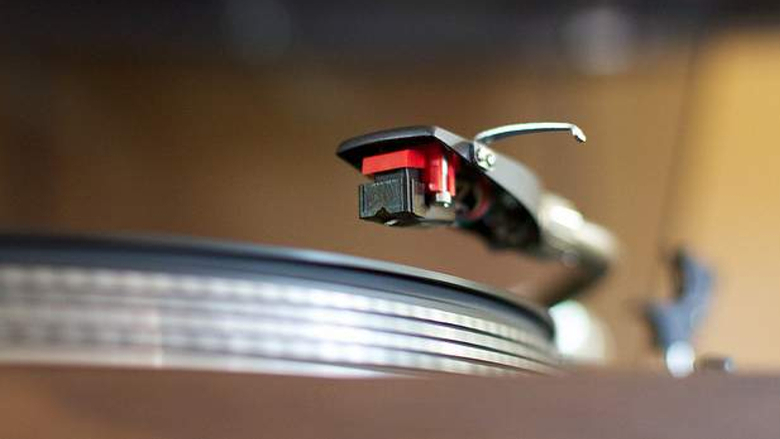
Though digital listening brings loads of convenience for music lovers, many look at vinyl as the last cool way to enjoy music. And while you could easily enter the hobby with an ultra-budget all-in-one record player, I find that spending a little more leaves with you a turntable that plays records with fidelity and respect. In any case, most will agree that transitioning to analog audio is a worthwhile investment that brings the labor of love to your listening space.
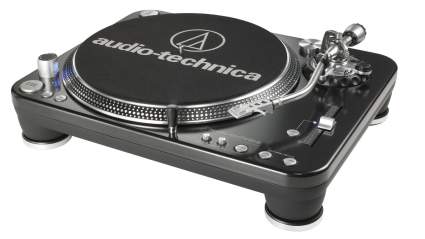
|
Amazon Customer Reviews
|
Price: $599.00 Shop at Amazon | Shop now Read our review |
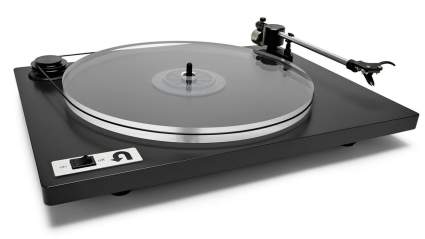
|
Amazon Customer Reviews
|
Price: $299.00 Shop at Amazon | Shop now Read our review |

|
Amazon Customer Reviews
|
Price: $595.00 Shop at Amazon | Shop now Read our review |
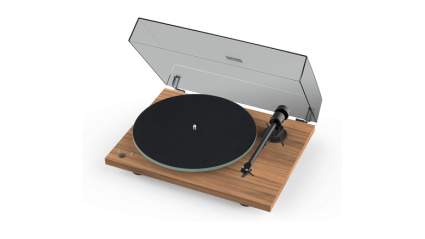
|
Amazon Customer Reviews
|
Price: $649.99 Shop at Amazon | Shop now Read our review |
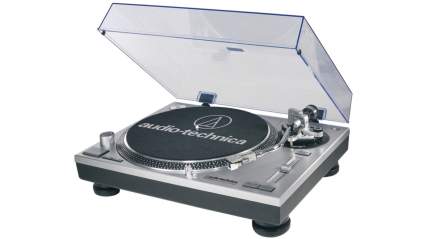
|
Amazon Customer Reviews
|
Price: $349.00 Shop at Amazon | Shop now Read our review |

|
Amazon Customer Reviews
|
Price: $249.99 Shop at Amazon | Shop now Read our review |
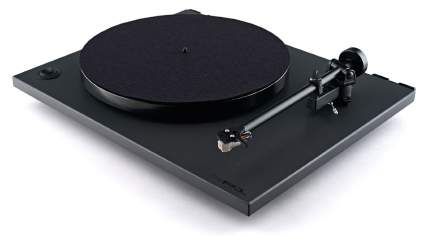
|
Amazon Customer Reviews
|
Price: $595.00 Shop at Amazon | Shop now Read our review |
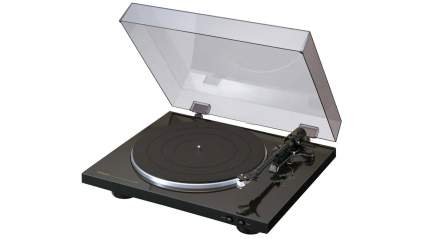
|
Amazon Customer Reviews
|
Price: $299.99 Shop at Amazon | Shop now Read our review |
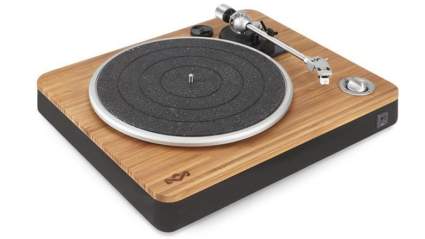
|
Amazon Customer Reviews
|
Price: $159.99 Shop at Amazon | Shop now Read our review |
-
1. Audio-Technica AT-LP1240
Pros:- USB connectivity for digital archiving
- High-torque direct drive motor enables controlled playback
- Quality metal tonearm tracks excellently
Cons:- No included cartridge or stylus
- Quieter line output than other tables
- Extra controls won’t be useful to home listeners
Audio-Technica is an absolute powerhouse for entry-level audio equipment, and while their LP1240 turntable faces stiff competition from Audio-Technica’s less expensive LP120-USB (reviewed further on), its quality aluminum parts and stronger motor make it a fantastic option for anyone who plans to use their turntable often.
The curved tonearm is solid and has a dedicated grounding lug, though it does not include a cartridge or a stylus. The table has sturdy rubber feet and includes a hinged dust cover.
This record player’s direct drive design and high-torque motor can handle the roughest use, making it a clear pick for professional DJs. The LP1240’s motor can do back-cueing, plus switch between forward and reverse play with ease.
While these features help cement the sheer value of the LP1240, most home listeners won’t benefit from pitch-shifting their audio, nonetheless playing records in reverse, which requires a special needle anyway.
These features are not simply tacked on though. They are all thoughtfully executed, right down to the controls to toggle between 33/45/78 RPM playback speeds. They have a great feel to them, as do the pitch control slider and start/stop button.
In any case, the value of a better motor is not lost on a casual listener, nor is the value of its hefty build quality. Its more precise motor means less wow and flutter in your playback.
The solid build ensures that no vibrations or motor noises interfere with the music. Its signal-to-noise ratio is 55 dB, which will please listeners who prefer analog setups for their high fidelity.
The AT-LP1240 has a built-in switchable phono preamp, which allows for properly amplified playback through most any receivers or powered speakers.
Even with this preamp though, line output doesn’t get at high as other turntables in its class so you will have to crank your volume knob just a bit more for this table.
This player has a standard dual RCA port, in addition to USB connectivity, which allows you to digitize your rarest cuts without losing their classic vinyl warmth.
It is bundled with a standard version of Audacity, a free software that performs basic recording functions efficiently.
All of this considered, the AT-LP1240 offers quite a lot of value and is cheaper than other manufacturers’ answer to this Super-OEM masterpiece, such as the Stanton ST-150.
If pricing is a primary concern, the cheaper LP120 is definitely the more value-conscious purchase. I always end up loving my Audio-Technica, so either table is a winning pick. Still, this unit, in particular, is a strong contender for the absolute best turntable under $500.
Find more Audio-Technica AT-LP1240 information and reviews here.
-
2. U-Turn Orbit Plus Turntable
Pros:- Stylish and precise acrylic platter
- Very low S/N ratio
- Custom design options
Cons:- Fully manual design can be cumbersome
- No way to adjust vertical tracking angle
- Basic feature set won’t please knob fiddlers
U-Turn Audio is a company with a simple goal: to offer a functional and beautiful turntable at a reasonable price. Their Orbit Plus turntable meets this goal elegantly with a no-frills open belt design that is too simple to fail.
The player is well put-together overall, but the most noteworthy parts of its construction are the beautifully painted MDF (medium density fiberboard) plinth and the large acrylic platter, both of which contribute to a steady and consistent sound.
The table’s motor sits separate from the plinth atop a unique rubber suspension, which does a solid job of preventing vibrations in the sound.
The other parts of this table are more modestly designed, such as the metal and plastic tonearm. It has a good tracking force and a low center of mass but isn’t particularly impressive.
This turntable also does away with automatic conveniences like a speed control button. For a manual player to change from 33 1/3 RPM to 45 RPM, you must instead move the taut rubber drive belt onto a different pulley.
The Orbit Plus also lacks a feature to stop records that have played all the way through, nor does it have a cueing lever, meaning that this turntable requires more involvement than fancier automated players out there.
Yet, for many turntable lovers, the manual actions are all part of the ritual. It is a special moment that connects you the music in a physical way. But others definitely prefer the automated alternative.
However you coax it out, the analog warmth of vinyl recording is a treasure, and the Orbit Plus makes listening to music wildly fun. Depending on where you purchase your table from, it will either come with an Ortofon OM-5E cartridge or a Grado Black1 cartridge, both of which are great options that will add punchiness and detail to your records.
Be careful using different cartridges on this table though, as if there is no easy way to adjust your vertical tracking angle. One owner did post a video outlining a fairly simple fix here.
The signal-to-noise ratio of the Orbit Plus is measured in A-weighted measurements, which consider human hearing limitations to rate the noise level at a nearly inaudible -79 dBA. Three vibration-damping feet also help achieve this impressive figure, though they aren’t height-adjustable.
For the price, the Orbit Plus delivers an incredible sound and will please first-time vinyl collectors and vets alike. This table’s stylish minimal design looks great with any setup, and the table is available in several colors through Amazon.
There are even more colors and customization options available too (including an optional tonearm lifter) on the U-Turn Webstore, though I do enjoy the sleek black design myself.
U-Turn also touts an incredible customer support team, replacing parts with regular design upgrades, and going the extra mile to ensure you enjoy your player.
Find more U-Turn Orbit Plus Turntable information and reviews here.
-
3. Music Hall MMF 2.3
Pros:- High quality tonearm and bearing
- Included cartridge provides solid tracking
- Adjustable vibration-damping feet and low noise engine enclosure
Cons:- Wall transformer and internally wired RCA cables
- Fully manual design can be cumbersome
- Low quality slip mat
Music Hall is a company that has spent many decades honing a quality analog sound. Their MMF series turntables are manufactured in the Czech Republic, in a factory that has been making turntables for over 50 years.
Despite their 2.3 turntable (second generation of the 2 line) being a part of their entry-level line, it sounds fantastic and shares several components with its higher-end counterparts.
The player, like most, requires some assembly and light calibration, most of which is detailed in this video and would take a prepared user no more than 30 minutes.
In terms of aesthetics, the MMF 2.2 is nothing fancy. Yet it is still pleasing to the eye. It comes in a high-gloss piano black lacquer, or a Ferrari Red color for a slightly higher price.
Music Hall sticks to minimalist aesthetics in their turntables, focusing instead on developing top sound quality. As such, this player is fully manual, right down to the stepped motor pulley for adjusting between 33 1/3 RPM and 45 RPM speeds.
The player does offer basic luxuries though, including a dust cover, adjustable vibration-damping feet, and a quality MDF plinth to hold everything together and resist vibrations. These great design choices are hindered by small inconveniences on the connections end though, as the power cable has a bulky wall transformer, and the table’s RCA cables are internally wired.
Aside from small design gripes and a subpar felt platter mat, this turntable packs a lot of quality parts for its price. The alloy platter is serviceable, and the separately isolated asynchronous motor is remarkably quiet.
The MMF 2.3 ships with the same alloy tonearm that comes on the Music Hall MMF 5.1, the next step up from this turntable. This solid tonearm provides excellent tracking, even on warped vinyl, and it sits atop a high precision stainless steel and bronze bearing.
The table has virtually no wow or flutter and breathes life into hi-fi recordings like some of the best players out there. The included music hall moving magnet phono cartridge comes mounted and properly aligned with an elliptical stylus. The sound it produces is nice and neutral, allowing your recordings to flourish as they were intended to by sound engineers.
By paying attention to the crucial details, Music Hall squeezes a lot of value into this value-priced player. The end result is a worthwhile turntable that offers affordability and sound quality above all else.
-
4. Pro-Ject T1 Reference Turntable
Pros:- High quality aluminum tonearm
- Includes Ortofon OM 5E cartridge
- Stylish and durable build
Cons:- No auto return
- Ortofon cartridge needs break-in time
- Counterweight does not come calibrated
The Pro-Ject T1 Reference Turntable is Pro-Ject’s answer to a best-buy turntable option, combining powerful design features with an affordable price. This is another manual player that forgoes elements of convenience to put their best dollar down on superior building materials.
The Debut’s 8.6-inch aluminum tonearm is its defining piece of equipment, as it greatly dampens unwanted resonance with its rigid design. This tonearm has only recently begun to be used on their lower-priced turntables and makes an instant difference in the quality of LP playback.
The tonearm is complemented with an included Ortofon OM 5E cartridge, which offers a clear and warm sound. It would separately add about $100 to the price tag. This cartridge is fairly common on turntables of this price tier, as they add clarity and life to recordings at a good price to the user. It does require some break-in time though. The measurements for the counterweight and anti-skate mechanism are not fully accurate on their own so a tracking force scale like the Shure SFG-2 would be a good thing to have.
Beneath the tonearm and cart sits an 8mm blasted-glass platter that offers consistent rotation, with little to no wow or flutter. And beneath the platter, the T1’s motor is suspended with thermal plastics and rubber in order to fully isolate the mechanical sounds from your audio recordings. Pro-Ject also includes a built-in preamp, which means one less piece of hardware you’ll need to get right to enjoying your music.
Looking past the moving parts, the T1 is still quite well built. The turntable has a beautiful walnut plinth and has a clear dustcover to protect your records while they are playing. This turntable does come with a felt slip mat but it is quite thin. It is practically begging to be upgraded to the Pro-Ject Cork It turntable mat. And one smaller downside for the Carbon is that it packs a fairly bulky wall transistor. This is expected for a quality turntable though, as this frequency DC-driven AC generator helps stabilize the power sent to the motor.
Aside from very small nitpicks, the Pro-Ject T1 offers everything one would look for in an entry-level turntable. Fans of Pro-Ject’s function-first audio gear will also enjoy listening to digital recordings through their Audio Head Box S2 Digital-to-Analog Converter, which is featured on my roundup of the best DAC amp combos.
Find more Pro-Ject T1 Reference Turntable information and reviews here.
-
5. Audio-Technica AT-LP120-USB
Pros:- USB connectivity for digital archiving
- Direct-drive, high-torque motor
- 3 playback speeds, reverse playback, plus pitch control
Cons:- Internally wired RCA cables
- Included cartridge could be better
- Price has recently risen
For those who appreciated the sturdy build and expanded feature set of the above-mentioned AT-LP1240, Audio-Technica’s own AT-LP120-USB is probably its best competitor for the top value in a direct drive turntable.
As a direct drive player, the LP-120 grants you access to a bunch of interesting features. Unfortunately, the average user will find only novelty in features like pitch control and reverse play, but they can be fun nonetheless.
There is certainly nothing wrong with having them, as the only real downside of direct drive tables doesn’t apply to this well-built clone of the LP-1200. Other direct drive tables will be more prone to motor vibrations leaking into sound, but the LP120’s motor is not even close to intrusive.
Another benefit is that this table can automatically change player speeds 33 1/3 RPM button and a 45 RPM button, and pushing them both will allow 78 RPM playback. The high-torque motor starts and stops quickly, and has no trouble turning its solid die-cast aluminum platter.
When it comes to sound, the table is on the money. Recorded audio comes through clear, and free from wow and flutter. Tonal detail is solid, and recordings flourish on this player, but it does not come equipped for studio levels of detail. The AT95E Dual Magnet phono cartridge functions decently, but would definitely be the first piece to upgrade on this player, especially since the standard mount makes it easy to replace the cartridge altogether.
Another reason to swap away from the AT95E is its heavy tracking force of 3-5 grams, which can be rough on a record if the player is bumped or jostled. But the player does track effectively right out of the box, especially with its metal S-shaped tonearm. Distortion is minimal, and skipping and popping are rare thanks to its anti-skate control and tonearm height lock.
The attached RCA cables are a bit of a disappointment since replaceable ones are so convenient. The LP120 still makes up for it and then some by offering USB connectivity and a built-in switchable preamplifier for playing on any sort of speaker systems.
With all of the features that the LP120 offers, it doesn’t end up looking as sleek and elegant as other players in its price range, but it has its own high-tech look. In addition to the numerous extra controls and sliders, the LP120 also has a pop-up stylus target light and stroboscopic platter speed indicator.
The LP120’s outer casing is actually plastic though, which is a big reason why some will prefer to upgrade to the all-metal AT-LP1240. As for which one is best for you, it depends on how you use it.
Find more Audio-Technica AT-LP120-USB information and reviews here.
-
6. Fluance RT81 Elite Turntable
Pros:- Great price value
- High quality tonearm and cartridge
- Very low S/N ratio
Cons:- No auto return
- Low tracking force
- Receives ground hum through some hi-fi systems
Manufacturer Fluance makes a wide variety of solid turntables in my target price range but the Fluance RT81 deserves special recognition for having a quite magical price-to-performance ratio. This is Fluance’s best entry-level turntable with a built-in Texas Instruments preamp, a feature that is forgone on the brand’s more expensive models. And that’s not at all to suggest that the RT81 will be quickly replaced by a budding analog enthusiast.
First, let’s talk about sound. Records sound great through the RT81 plus a nice pair of speakers. The sound is clear and mostly balanced with a slight lean towards brightness. Much of this sound is characterized by its hardware, which includes an AT95E Dual Magnet phono cartridge.
The AT95E has been one of the top entry-level cartridges since the ’80s and it is notably included in the pricier Audio-Technica AT-LP120-USB reviewed above. It is attached via an H-4 Bayonet Mount to an aluminum S-type tonearm. The tonearm supports tracking forces between 3.5 and 6.5g, which works fine out of the box but may limit your upgrade potential in the future. The tonearm counterweight does not come calibrated out of the box.
Speaking of upgrades, Fluance offers a whole line of turntables that mark incremental upgrades over one another. The Fluance RT83 is another turntable of noteworthy specs (I personally love the Ortofon 2M Red cartridge) but it does require an external preamp. I assume that these other models are of comparable build quality and value but Fluance specifically sent me the RT81 for an unbiased review.
The RT81 specifically is solidly built, at least considering the price. The aluminum platter is of decent quality and experiences very little motor vibration since it is belt-driven. The MDF wood plinth comes in a few nice finishes like piano black, piano white, and walnut. The knob to switch between 33 1/3 RPM and 45 RPM playback sits on the plinth underneath the dust cover. It has gold-plated RCA outputs plus a ground connector, although the ground connector hummed a little when I connected it to my old hi-fi speakers.
The one downside is that this is mostly a manual player, with the only mechanical function being the optional auto-stop feature (which I recommend using to preserve the life of your stylus). This is easy to look past, though, as the Fluance RT81 plays like a turntable that is twice its price. It is an overall great budget option for users who don’t want to compromise on sound quality.
-
7. Rega Planar 1 Turntable
Pros:- Lightweight design does not encourage vibration
- Rega Carbon cartridge has low noise floor
- High quality, low vibration motor
Cons:- No way to adjust vertical tracking angle
- Some units suffer from wobbly platter
- Receives ground hum through some hi-fi systems
UK-Based company Rega makes many grand promises about its Planar 1 turntable, but at the end of the day, these claims are thoroughly substantiated. Their RP1 turntable is definitely a consideration for the best turntable under $500.
Behind its spartan manual design, the Planar 1 delivers a solid analog sound with some design choices that give this player marginal value over others.
To start, the Planar 1 is notably lighter than other record players, as reducing the potential for energy transfer is a key design philosophy for Rega. By using lighter materials for the Planar 1’s MDF plinth, the player transfers less vibration from its high-quality motor.
In a lot of ways, this principle opposes other players who rely on weighty parts to reduce vibration, but both ideas work in practice. The motor used in the Planar 1 is frequently compared to those used in higher-end Rega models, not to mention classic players like the Linn Sondek LP12.
Another big part of this weight difference comes from the table’s phenolic resin (aka bakelite) platter, which is only weighted at the outer edge of the platter in order to achieve a flywheel effect that ensures stable play.
Conversely, some users report disappointment in the platter, which occasionally ships with a slightly warped surface. The general consensus is that a wobbly platter does not significantly affect playback, but it affects user experience all the same.
The latest Planar 1 models come stock with a Rega Carbon moving magnet cartridge, which is known for having a very low noise floor. The Planar 1 used to ship with an Ortofon Red cartridge, which has a nice warm sound, but those looking for a more neutral sound will prefer the Rega Carbon. Keep in mind that this player has no way to adjust the vertical tracking angle of the tonearm so you won’t be able to upgrade to just any cartridge.
The tonearm is simple yet effective and contributes to great tonal quality and channel separation. Materials seem to be simple plastics, but all the same, the tonearm elevation is well damped and downforce is consistent.
The Planar 1’s RCA cables are permanently attached to the turntable and do not have a ground clip, which according to reviews, can lead to some ground hum in some setups. This player also lacks a phono stage and needs an external one.
All in all, the Planar 1 has its flaws, but still stands as a top-quality player. And there is certainly something to be said for their innovative approach, as many entry-level player specs are fairly uniform.
Find more Rega Planar 1 Turntable information and reviews here.
-
8. Denon DP-300F Fully Automatic Analog Turntable
Pros:- Automatic start and stop of playback
- Accurate tracking from angled headshell
- Low price for an automatic player
Cons:- Plastic plinth could be nicer
- Ships from some vendors with lower-quality cartridge
- Receives ground hum through some hi-fi systems
Denon’s DP-300F is unique among the top budget record players, in that it offers both quality sound and fully automatic controls. That means that all you have to do is press play, and the player automatically lifts the tonearm and gently lowers it over the active platter as not to damage the stylus or record. When the record side is finished, the platter stops spinning and the tonearm resets so you can do it all again.
One of the biggest benefits of automatic players is that you can fall asleep to your favorite record without waking up to the sound of your needle scraping over the label. The classy design, complete with dust cover, makes this player a great bedroom player, especially since the built-in preamp makes it easy to hook this player up to any speaker setup you have.
The build quality is solid all throughout the DP-300F. The heavy plastic plinth does not set any records for durability or vibration reduction, but it does get the job done alongside its die-cast aluminum platter. The mechanical parts, including the belt-driven motor, are all remarkably silent and do not affect the sound in any discernible way.
The design of this table is full of other small surprises like a nice rubber slip mat, and RCA connectors. Or another automatic convenience, a button to switch between 33 1/3 and 445 RPM playback speeds.
Many listeners will be surprised to find that that the DP-300F packs a pretty solid sound in addition to its solid suite of automatic features. The audio comes through with no crackling or popping and draws comparison to the sound-focused competitor models from Rega, Project, and Music Hall.
There is no ground wire, which only a small but vocal minority of hi-fi overlords believe cause ground hum, but may end up influencing your listening experience nonetheless.
The straight tonearm has a removable angled headshell, which improves tracking on side grooves. Depending on where you purchase your player, the DP-300F can ship with a number of different cartridges.
The best option available out of the box is the Ortofon 2M Red cartridge, which sports a charming warmth that is slightly rolled off. Whatever cartridge you end up with, though, it can be easily replaced thanks to a standard cartridge connection.
For those looking for a player that is both great sounding and convenient, the DP-300F is almost too good to be true. This player has an impressive fit and finish, and delivers a great sound for the price. This is definitely a top pick for anyone looking for an affordable automatic player.
Find more Denon DP-300F Fully Automatic Analog Turntable information and reviews here.
-
9. Stir it Up by House of Marley
Pros:- Beautiful bamboo plinth
- High quality metal tonearm
- USB output plus built-in phono amp
Cons:- Cloth dust cover does not protect from dropped objects
- Counterbalance does not reliably measure tracking force
- So-so cartridge
House of Marley is a newcomer to the turntable market, but their core philosophies shine through brilliantly in their debut Stir it Up turntable.
The Stir it Up is visually striking, with a gorgeous 15mm layer of bamboo covering their MDF plinth. This both dampens unwanted vibrations and adds a nice retro style to the player.
On the underside of the plinth, the rest of the body is made from upcycled material. It has springy feet that further absorb shock. You will find USB connectivity next to its rear RCA cable, and a headphone jack in the front. There is a spot to store an included 45mm adapter.
As an entry-level player, this turntable doesn’t spoil you with anything fancy in terms of a cartridge or stylus. The Stir it Up comes with a basic Audio Technica cartridge that sounds decent, but with the player’s budget price range, should be the first thing you upgrade when you can afford it.
The tonearm is of solid metal construction with a beautiful inscription etched on it: “One good thing about music, when it hits you, you feel no pain.” The aluminum platter is lightweight and has good weight distribution.
The tonearm counterbalance is a little frustrating to set up. The measurements etched into the counterbalance don’t match up at all against a proper stylus tracking force scale, so you’ll need one for a proper setup.
One downside of this turntable is that instead of coming with a plastic dust cover, it comes with a cloth one. This is just as good for preventing dust buildup but won’t protect your player from dropped objects, or in my case, when my cat wants to sit right on the tonearm.
Considering the value price of this player, a couple shortcomings shouldn’t be a total surprise. But I will say this. As far as a new or returning vinyl enthusiast is concerned, the Stir it Up will meet pretty much all of their needs, and it will look good doing it.
Find more Stir it Up by House of Marley information and reviews here.
What Turntable Should You Buy?
Spinning a record from your favorite band offers an aesthetic experience that simply cannot be reproduced by digital listening. But a record player is a tricky purchase, as you can spend a nearly unlimited amount of money in search of the best value. So when determining which record player is best for your needs, budget is going to be the main factor (aside from sound quality, of course).
I've tried a wide variety of turntables across a wide price range and my personal opinion is that a budding fan of analog audio need not spend more than $500 to get a worthy turntable. But some additional expenses may be required as well.
Depending on what kind of audio setup you're already working with, you may also need to spring some extra cash on a solid pair of monitors. Some older turntables will also require a preamp but thankfully all of the models I reviewed above have one built-in.
When you don't have a local Hi-Fi shop nearby, it can be hard to get a feel for the kind of sound you can expect from these turntables, so check out some video reviews if you aren't able to pick out a winner based purely on specs.
However, as long as you pick from my list of the best turntables under $500 then you can't really go wrong.